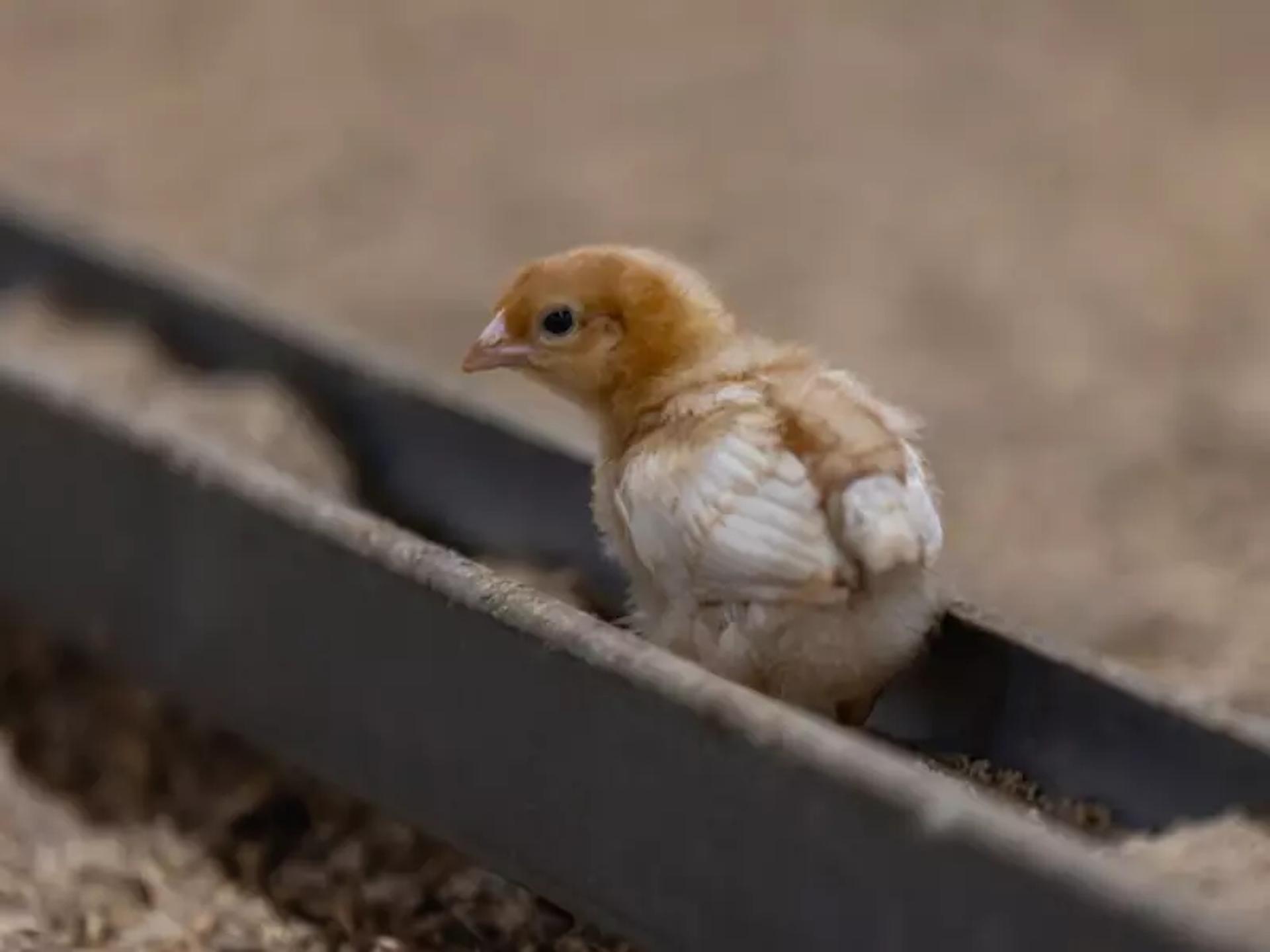What happens to male chicks in the egg industry?
By Chloe Pate, scientific and policy officer for hens, RSPCA

As an expert on the welfare of laying hens, I’m often asked about what happens to male chicks in the egg industry.
Many people assume all chicks grow up to lay eggs. Sadly, that isn’t the case – and the reality is difficult to hear.
Male chicks can’t lay eggs, and because they come from specialist egg-laying breeds, they’re also not suitable for meat production.
That means every year, millions of day-old male chicks are killed. It’s upsetting, but it’s the reality we’re faced with – and I believe being open and honest about this issue is vital if we want a better, more compassionate future.
Why are male chicks killed?
When chicks hatch in large commercial hatcheries, they’re immediately sorted by sex:
- Female chicks are raised to become laying hens, which produce eggs sold in supermarkets and restaurants
- Male chicks, on the other hand, can’t lay eggs. Unlike meat chickens (which are bred to grow large breast and leg muscles), egg-laying breeds put all their energy into producing eggs. This means the males are too small to rear for meat.
Because of this, hatcheries humanely kill male chicks on their first day of life.
In the UK, the most common method is gassing. The law also permits ‘chick maceration’ – a process that’s considered humane because it kills instantly.
What is chick ‘maceration’?
Chick maceration involves using special equipment – such as a machine containing rapidly rotating blades – which kills the birds immediately.
Under UK law, maceration is recognised as humane because the chicks die instantly, preventing any suffering.
That said, most UK hatcheries now use gassing, which is also humane but generally more acceptable to the public.
It’s also worth knowing that male chicks are not simply thrown away after they’ve been gassed. Many are used as food for birds of prey, exotic pets, or other captive animals – meaning they’re not wasted.
What happens to the female chicks?
The female chicks are moved to barns where they’re reared until they’re old enough to lay eggs.
It’s important to be aware that, at this point, millions of egg-laying hens are moved to what are known as ‘enriched’ or ‘colony’ cages.
On RSPCA Assured members’ farms, hens are never kept in cages.
Instead, they live in free-range (including organic) or barn systems where they have space to move around and express natural behaviours like scratching, perching and dustbathing.
That’s why choosing eggs with the RSPCA Assured label makes such a difference. It’s a direct way to support farms that put hen welfare first.
Could male chick culling be stopped in the future?
Here’s where I feel hopeful. Researchers are developing alternatives – and one of the most promising is the development of ‘dual-purpose’ chicken breeds.
These breeds could be used for both meat and egg production. So females could be reared for either meat or laying eggs – and males for meat. This would remove the need to routinely kill male chicks.
There’s also in-ovo sexing technology. This involves identifying the sex of the chick while it’s still inside the egg. Male embryos (very young baby chicks) could then be removed at around seven days old, before they develop the ability to feel pain.
This technology is already being trialled in some countries, but hasn’t been adopted in the UK yet.
However, we have some concerns about this method as unwanted male embryos would still be killed.
We’re monitoring these developments closely and pushing for solutions that are kinder and more sustainable.
What do the RSPCA’s welfare standards allow?
Right now, laying hen hatcheries rearing chicks for RSPCA Assured farms use gas to kill male chicks.
The mix of gases is strictly controlled to make sure the chicks lose consciousness quickly and don’t suffer.
Maceration is also allowed by the standards as scientific evidence shows it’s instant and painless.
We really hope the killing of male chicks will no longer be necessary in future, thanks to new humane practices and technologies.
Working towards a better future
The killing of male chicks is one of the toughest ethical issues in the egg industry.
Even though the methods used are designed to be humane, it’s still difficult to accept. But there’s hope.
Research into practices and technologies such as dual-purpose breeds is progressing and could one day remove the need to cull male chicks altogether.
It isn’t easy to talk about, but by being honest and working for change, we can help build a kinder future for every chick.
Frequently asked questions
Do all hatcheries kill male chicks?
In many countries – including the UK – the killing of male chicks from egg-laying breeds continues to be standard practice because they can’t lay eggs and can’t currently be used to produce meat. However, several European countries have banned or are phasing out the routine killing of male chicks.
Why aren’t male chicks reared for meat?
Male chicks from egg-laying hen breeds can’t lay eggs and don’t grow big enough to be reared for meat. This is why, at the moment, male chicks are humanely killed shortly after hatching. Researchers are working on alternatives such as special ‘dual-purpose’ breeds. This is where males could be reared for meat and females for eggs (or meat). These advances could make the routine culling of male chicks unnecessary in future.
When will in-ovo sexing be used?
The technology is still being tested and developed overseas. In some European countries, it’s already in use – mainly because new laws or strong public pressure have pushed for an end to male chick culling. Here in the UK, it hasn’t been adopted yet. The RSPCA has concerns about this method as breeding flocks would still be producing these eggs, and unwanted male embryos would continue to be killed.
Tuesday, 30 Sept 2025